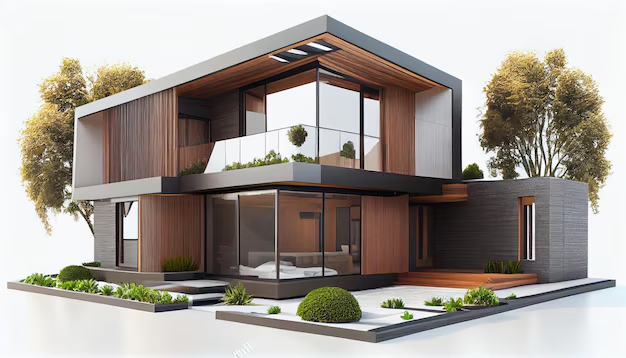Architectural innovations have shaped the way we live and interact with spaces, evolving alongside technological, cultural, and social advancements. From ancient civilizations to modern times, each period brought new ideas and techniques that transformed the built environment. Here’s a look at some of the key architectural innovations throughout history:
1. Ancient Architecture: The Birth of Monumental Structures
- Egyptian Pyramids (c. 2600 BCE): The Egyptians mastered stone-cutting and engineering to construct massive pyramids as tombs for their pharaohs. The Great Pyramid of Giza is still one of the Seven Wonders of the Ancient World.
- Greek and Roman Architecture (c. 500 BCE – 500 CE): The Greeks perfected the use of columns, giving rise to the Doric, Ionic, and Corinthian styles. The Romans advanced these ideas with the development of arches, domes, and concrete, leading to the creation of iconic structures like the Colosseum and the Pantheon.
2. Medieval Architecture: From Romanesque to Gothic
- Romanesque Architecture (c. 800 – 1200 CE): Known for thick walls, round arches, and small windows, Romanesque architecture often aimed to convey solidity and permanence.
- Gothic Architecture (c. 1100 – 1500 CE): Gothic architecture brought about revolutionary innovations like the flying buttress, ribbed vaults, and pointed arches, which allowed for taller, more light-filled structures. Iconic examples include the Notre-Dame Cathedral in Paris and Chartres Cathedral.
3. Renaissance Architecture: Rebirth of Classical Ideas
- Rebirth of Symmetry and Proportions (c. 1400 – 1600 CE): Architects like Filippo Brunelleschi and Andrea Palladio revived the principles of classical Roman architecture, emphasizing symmetry, proportion, and the use of columns and domes. Brunelleschi’s dome for the Florence Cathedral remains a marvel of engineering.
4. Baroque and Rococo Architecture: Drama and Ornamentation
- Baroque Architecture (c. 1600 – 1750 CE): Baroque architecture was characterized by dramatic use of light, bold ornamentation, and large-scale, complex designs. St. Peter’s Basilica in Vatican City, designed by Michelangelo and others, is a prime example.
- Rococo Architecture (c. 1700s CE): Emerging from Baroque, Rococo featured more intricate, playful, and asymmetrical forms, seen in buildings like the Palace of Versailles.
5. Industrial Revolution: Mass Production and New Materials
- Iron and Steel Construction (c. 18th – 19th centuries): The Industrial Revolution brought the development of new materials like cast iron and steel, which allowed for the construction of larger, more durable buildings. The Crystal Palace, built for the Great Exhibition of 1851, showcased glass and iron as building materials.
- Skyscrapers (late 19th century): The invention of steel-frame construction, along with elevators, led to the creation of skyscrapers, starting with the Home Insurance Building in Chicago in 1885.
6. Modernism: Function Over Form
- Modernist Architecture (c. 1920s – 1960s): Modernist architects, such as Le Corbusier, Ludwig Mies van der Rohe, and Frank Lloyd Wright, emphasized clean lines, open spaces, and the use of new materials like concrete, glass, and steel. Wright’s Fallingwater (1935) is an iconic example of integrating a building with its natural surroundings.
- International Style (c. 1920s – 1970s): A global movement, this style is characterized by minimalism, functionality, and the absence of ornamentation. The Bauhaus school of design was a major force in spreading these principles.
7. Postmodernism and Deconstructivism: Breaking the Rules
- Postmodern Architecture (c. 1970s – 1990s): Postmodernism reacted against the stark minimalism of modernism, incorporating playful elements, historical references, and ornamentation. The Piazza d’Italia in New Orleans, designed by Charles Moore, exemplifies this style.
- Deconstructivism (1980s – Present): Deconstructivist architecture is marked by fragmented, chaotic forms and an emphasis on disorientation. Architects like Frank Gehry and Zaha Hadid pushed the boundaries of traditional design, as seen in Gehry’s Guggenheim Museum in Bilbao.
8. Contemporary Innovations: Sustainability and Smart Design
- Sustainable Architecture (c. 21st century): With increasing awareness of environmental impact, architects have turned to sustainable design practices. This includes the use of renewable energy sources, green roofs, and materials that reduce carbon footprints. The Bullitt Center in Seattle is an example of a net-zero energy building.
- Smart Cities and Digital Fabrication: Advances in technology, such as 3D printing and AI, are influencing modern architecture. Buildings can now be designed with digital tools that optimize energy efficiency and enhance structural integrity. Additionally, smart cities are incorporating data and sensors to improve urban living, as seen in projects like Singapore’s smart city initiatives.
9. The Future: Adaptive and Responsive Architecture
- Adaptive Reuse: In response to limited resources and sustainability concerns, adaptive reuse involves repurposing existing buildings for new uses. This can be seen in many urban revitalization projects.
- Responsive and Interactive Architecture: The future of architecture might include buildings that adapt to their environment and occupants, using sensors and smart technology. Buildings may dynamically adjust temperature, lighting, and other factors to create more sustainable and personalized spaces.
Conclusion
Architectural innovations reflect humanity’s evolving needs and creative expression. From the ancient wonders of the world to cutting-edge modern structures, architecture continues to innovate, combining aesthetics with functionality and responding to the challenges of the present and future. Whether driven by the pursuit of beauty, practicality, or sustainability, architecture will always be a fundamental expression of culture and technological progress.

